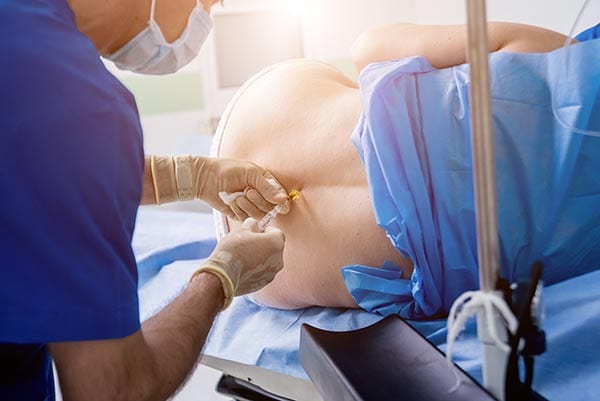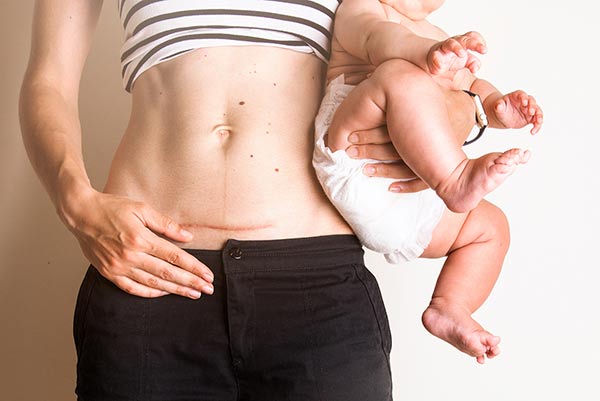As of 2019, there were approximately 372,038 live births in Canada, and the number will continue to climb as more mothers are expecting.
Whether you're thinking about epidurals, C-sections, or natural births, there are many things that you need to know about each of them.
If you're still battling with your decision of how you want to bring your child into this world, we're here to help. Below, we will provide you useful information you need to move forward as you get closer to going into labour.
What Is An Epidural?
Now that you've scheduled your maternity leave it's time to talk about epidurals.
An epidural is a painkiller that's given to a mother in labour through an Intravenous (IV). Epidural medication is administered through your back using an epidural needle. It can be painful when inserted, but the medication works to help reduce the pain a woman feels when experiencing contractions.
When you're getting an epidural, it can't be administered by the nursing staff. There will need to be an anesthetist called into the room to administer the medication. Depending on the place you're giving birth, there will be a cutoff when you're no longer able to receive an epidural because your labour is in its advanced stages.
One question that mothers have when contemplating getting an epidural is how it will affect the child. It affects your child if your blood pressure drops; it can cause the oxygen reaching your baby to fluctuate.
Another thing to keep in mind is that small traces of the painkiller can cross the placenta. When it's time to push, part of knowing when to push is being able to feel your contractions.
For some women being able to feel their child come out during labour varies. Some will be able to feel the pressure of their contractions without the pain and know when to push, while others will need to get cues from their labour and delivery staff to know when it's time to push.
Your doctor might recommend getting an epidural if you cannot manage your pain by using things like breathing techniques.
Side Effects and Risks of Epidurals
The most common epidural side effect is the numbness that occurs. This numbing effect will only be in effect for a short period. Still, it's worth noting that before you're able to leave the hospital, your labour and delivery team will ensure you're able to walk and have gained feeling back in your lower extremities.
Another common side effect or risk that women experience after having an epidural is a spinal headache. These headaches occur when the spinal sac has been punctured, and while intense, the headache will eventually subside.
Some women experience temporary loss of their bladder control. This is why typically, if you've received an epidural, you'll also have a catheter inserted before the medication is given.
What Is A C-Section?
The current C-section rate in Canada is 26.3%, which is lower than it's been in past years. Several things might make you eligible to receive a C-section.
Cesarean delivery or simply called C-Section is a surgical process or procedure of delivering a baby through incisions in the abdomen and uterus.
When to Decide?
If you're carrying multiple children, your doctor may recommend a C-section because it's safer for you and your children if they're brought into this world under controlled circumstances. Another reason that you may be eligible for a C-section is if you're in labour, but it's not progressing the way your doctors would hope.
If there are issues detected with the placenta or the positioning of your child, this is another reason you would qualify for a C-section. You can refuse to have a C-section, but this doesn't mean you won't wind up having one in the end.
Keep in mind that a doctor typically won't recommend a C-section unless there are health concerns that would require one. If you've had a C-section performed, you can expect to stay in the hospital for upwards of 5 days to ensure there were no complications from the surgery.
What to Expect After A C-Section
After you've had a C-section, there are several things that you can expect in the following days. You'll be quite sore because you've just had major abdominal surgery bringing a life into the world.
Your doctor will ensure that the stitches are healing and there's no sign of infection that requires immediate treatment. Following your delivery, you'll be given guidelines to take it easy, and you'll need help lifting your baby.
Your doctor will give you medication that will help to manage the pain you've been feeling following surgery. Although you didn't give birth vaginally, you still might experience some bleeding from your vaginal area.
For this reason, it's recommended that you don't insert anything into the vagina until the bleeding has subsided and your doctor has cleared you. Before leaving the place where you gave birth, you can inquire about pads that can help to catch the blood.
You will have a C-section scar that develops as your incision site continues to heal.
What Is Natural Birth?
The term 'natural birth' is used to describe when a woman goes into labour and delivers their child vaginally without the help of any medication.
However, it's worth noting that depending on who you are, your definition of natural birth may be different from others.
If you look back in time, the term natural birth refers to a woman giving birth vaginally without medical help. However, there are several types of natural births, including:
- Giving birth at home
- Giving birth in a birthing centre
- Giving birth in a hospital
When you think of natural birth, the best thing to keep in mind is that your pain will not be the pain that someone else experiences. Therefore, we can not say if it will be painful for you, but most women experience contractions that become intense over time.
Coping Techniques for Natural Birth
There are several drug-free techniques you can use if you wish to have a natural birth. The first is hydrotherapy, and this is commonly when women get in and out of the shower or a birthing tub throughout their labour.
Water helps to ease the pain of contractions through the soothing of warm water. Another technique used to control contraction pain is using breathing techniques.
Anytime you feel a contraction coming on, you learn to control your breathing and focus on working through each 'wave' as it comes. Some women choose to practice mindfulness, which is a form of meditation.
When you're practicing mindfulness, you're making yourself aware of everything your body is feeling and reminding yourself that the pain is only temporary.
Different Birthing Positions
During natural labour and birth changing positions will help bring the baby down while making it easier to manage the pain of contractions. If you're in a squatted position, the benefit is that you're opening your pelvis up.
By doing this, it becomes easier for gravity to help your baby work its way down into the birthing canal. If you can't hold yourself up in this position, you can always ask your support person for some help.
If you choose to kneel, this is another position that helps gravity do its job. By kneeling, you can reduce the amount of pressure that is on your legs and conserve your energy for when it's time to push your baby out.
Standing is also beneficial because you can do different things like rocking back and forth to improve the pain you're feeling. Depending on who you are standing up could cause your contractions to become more intense.
Risks of Natural Birth
Anytime you give birth to a child, there are going to be some risks involved. During a natural birth, one risk you take is the risk of tearing.
Perineal tears are measured from first-degree to fourth-degree tears. The first-degree tear is a minimal tear that occurs superficially and isn't as severe. In contrast, the fourth-degree tear is essentially a tear that begins at the opening of the vagina and goes all the way through the anal sphincter.
Another risk that comes with natural birthing is damage done to the pelvic floor. However, there are circumstances when doing some kegel exercises can help to strengthen the pelvic muscles over time.
There are risks for mothers during natural birth and risks that babies have when being birthed this way. One of the risks for babies is should dystocia.
When a child becomes stuck in the birth canal or doesn't come out in the proper position, it causes issues with their shoulder. Other risks for your child include fetal distress if labour isn't moving at the pace your healthcare team expected it to.
Bringing Babies Into the World
There is a massive amount of information about epidurals, C-sections, and natural births, and all things to do with labour and delivery that can help you make your decision.
The method you choose when delivering is personal and between yourself and your healthcare team.
The first thing you need to think about before starting a family is obtaining health insurance. If you need insurance, get quotes from Insurdinary now.



